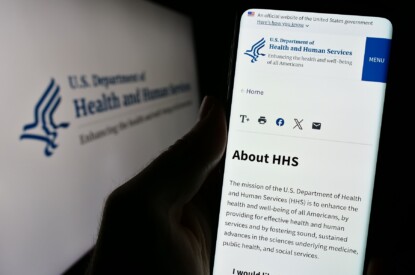Earlier this year, for the first time in nearly 20 years, the Federal Highway Administration (FHWA), U.S. Department of Transportation (DOT), amended regulations implementing the Uniform Relocation Assistance and Real Property Acquisition Policies Act (Uniform Act). The objectives of the FHWA’s “Final Rule,” which was published in the Federal Register May 3, 2024 (89 FR 36908) and became effective June 3, broadly included clarifying existing requirements for implementing the Uniform Act, revisions to address “modern needs,” and improving agencies’ service to individuals and businesses affected by Federal or federally assisted projects.
URA and “Final Rule” Background
The Uniform Act provides protections and assistance for people affected by Federal and federally assisted projects that involve real property acquisition, or displacement of persons that results from federal-funded activities. These “cross-cutting” requirements are triggered not only for projects using FHWA funds, but for any federally funded program or project involving acquisition or displacement.
Uniform Act requirements are contained in seven subparts (A-G) in 49 Code of Federal Regulations (CFR) Part 24. Changes to the regulations were necessitated in part by the Moving Ahead for Progress in the 21st Century Act (MAP-21), enacted June 2012. Section 1521 of MAP-21 included increases in benefit levels for displaced persons, authority to develop a regulatory mechanism to consider and implement future adjustments to those benefit levels, along with other requirements and provisions.
Additionally, actions undertaken by FHWA since the last change to the rule (in 2005) confirmed that there were additional potential opportunities to improve implementation of the Uniform Act, including improvements to the Federal government’s service to individuals and businesses affected by Federal or federally assisted projects and programs.
Summary of “Final Rule” Changes
The 2024 “Final Rule” reflects the FHWA’s commitment to modernizing regulations, improving services, and enhancing equity for displaced individuals and businesses. These changes align with contemporary needs through increased benefit levels, clarification of key provisions and definitions, and streamlining processes for displaced persons and displacing agencies. Below are the key updates outlined in the “Final Rule.”
Increased Benefit Levels for Displaced Persons
The “Final Rule” notably increased benefit levels to account for post-2012 inflation, resulting in a 33 percent increase in assistance for people and businesses required to move due to federally funded projects.
Delivery of Notices
In Subpart A of Part 24, in addition to USPS certified mail and in-person delivery, the updated regulations now permit other certified mail options, as well as electronic delivery of notices. They also allow property owners to designate an authorized representative to receive notifications on their behalf (Section 24.5).
Increased Waiver Valuation Thresholds
In Subpart B (Real Property Acquisition) of Part 24, the FHWA increased the waiver valuation thresholds for property acquisitions with an estimated fair market value from $10,000 to $15,000 for the first tier, and $25,000 to $35,000 for the second tier (Section 24.102(c)(2)). By raising waiver valuation thresholds, the Final Rule reduces administrative burdens and accelerates project timelines for lower-value acquisitions.
Enhanced Relocation Planning
Subpart C of Part 24 contains the FHWA’s requirements relating to relocation, including the provision of relocation planning, advisory services, and coordination (Section 24.205). Perhaps the most substantial clarification to Subpart C involves the focus on the purpose of the relocation planning process, which requires federal agencies and entities implementing federally assisted projects and programs, to better plan projects in order to identify potential problems and solutions and to minimize impacts of displacement on individuals, families, businesses, farms, and nonprofit organizations. This enhanced relocation planning requirement now emphasizes proactive identification of potential challenges in order to streamline solutions and reduce disruptions for displaced families and businesses.
Expanded Eligible Moving Expenses
Another direct benefit to displaced persons (clarified in the Final Rule) is that rental replacement dwelling application fees or credit reports required to lease a replacement dwelling now clearly constitute moving expenses that are eligible for reimbursement (up to $1,000). This was an amendment to Subpart D of Part 24, which contains the FHWA’s rules and requirements relating to moving and related expenses.
Definitions
- Displaced Person – Previously, persons who were temporarily relocated (less than one year of relocation from a project site) were not considered under this definition, and as a result, URA regulations provided scant rules and guidance on administering temporary relocation assistance. The June 3 updates include temporarily relocated persons under this definition and provide more clarity on administering URA relocation assistance to these persons.
- Person Not Displaced – May now include temporary, daily, or emergency shelter occupants; contains an instruction on providing advisory assistance to these types of occupants.
- Initiation of Negotiations – Term now expands on the range of federally funded programs and projects that trigger the URA by including rehabilitation and demolition activities, making it applicable to a broader set of actions that might lead to property acquisition or displacement and aligning the definition with common practices in projects.
HORNE URA Experience
HORNE’s experience assisting its clients with navigation and implementation of the Uniform Act includes having provided a range of services to several state and local government recipients of Federal funding. The firm has assisted clients in the areas of policy development, tenant relocation and case management activities, compliance enforcement, and subrecipient training.
In New York (state), for example, the firm assisted the Office of Resilient Homes and Communities (RHC) with outreach activities specific to relocation, including contacting renters (later displaced) and coordinating with real estate specialists—to collect information needed to identify comparable, suitable housing that met Uniform Act requirements with respect to quality standards for living.
The firm has also partnered with the (New York) Governor’s Office of Storm Recovery (GOSR) to support the agency in the robust enforcement of applicant compliance with the Uniform Act, which, in some cases, involved the recapture of grant funds from applicants who were not compliant with Federal requirements. HORNE further assisted GOSR with resource and financial planning through implementation of a fixed schedule for collection of beneficiaries’ receipts and relocation claims.
In Puerto Rico, HORNE worked with the territory’s Department of Housing (PRDOH) to develop an expansive URA acquisition and relocation guide to support a portfolio of CDBG-DR and CDBG-MIT programs. The firm assisted with the development of a URA Anti-Displacement Plan for the island and established procedures and systems to track compliance with URA requirements. And most notably, HORNE played a key role in assisting PRDOH with the relocation of hundreds of households and small businesses in Puerto Rico that were impacted by federally funded projects.
HORNE Technical Advisory Group
The Technical Advisory Group (TAG) within HORNE’s Government Services division possesses the subject matter expertise and capability to assist Federal funding recipients (or subrecipients) with application of the FHWA’s “Final Rule,” as well as all implementing regulations of the Uniform Act.
Prior to implementation of a Federal or federally assisted project or program, HORNE’s Uniform Act subject matter experts will assist clients with the development of a residential anti-displacement plan, as well as a broader URA and relocation policy, and implementing procedures. During the implementation phase, HORNE’s TAG will ensure that the proper internal controls are in place so that both the Federal funding recipient and program/project participants remain compliant with FHWA requirements, and in the case of participants, receive the Federal benefits to which they are entitled.
Finally, the TAG will conduct monitoring and other QA/QC activities to verify that the program files for activities that triggered Uniform Act requirements are complete and demonstrate compliance with FHWA and individual program requirements. Throughout our partnership, we will meet any training needs your staff or subrecipients may have with respect to the Uniform Act.
For more information on how HORNE can assist your organization with implementation of the FHWA’s “Final Rule,” or Uniform Act compliance more broadly, please contact us here to submit your question or request. Our technical expertise enables us to deliver impactful results, while ensuring compliance and protecting the rights of affected persons.






